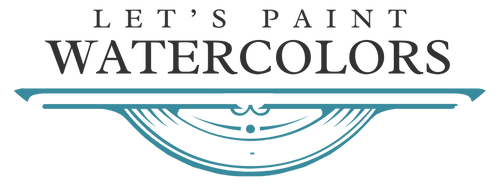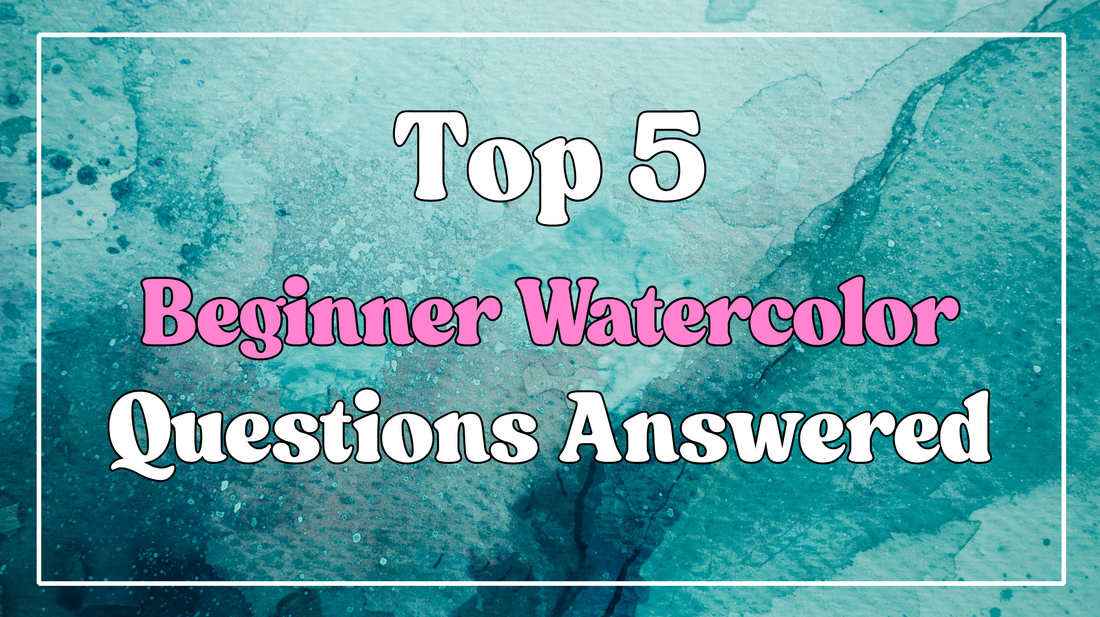Getting Started with Watercolor: Top 5 Questions Beginners Ask (with Tutorials!
This post may contain affiliate links at no extra cost to you. Please read our full disclosure here to find out more.
Watercolor painting has a magical quality that pulls people in—soft washes, dreamy blends, and expressive textures that make it feel like the paint is alive. If you're a beginner, it might seem intimidating, but watercolor is one of the most approachable art forms out there. You don’t need a huge budget or a formal art education. What you do need are a few key tutorials, a basic understanding of how watercolor works, and answers to the most common beginner questions.
Let’s dive into the top 5 questions that watercolor beginners ask, with tips, visual examples, and suggested tutorials to help you get started on the right brushstroke.
1. What Supplies Do I Need to Start Watercolor Painting?
This is usually the first question every beginner asks—and it’s a good one. The world of art supplies can be overwhelming, but to start painting with watercolor, you really only need a few essentials.
Beginner Watercolor Supply List:
Here's a handy link to my full list of Recommended Supplies - Click Here
- Watercolor Paints: Start with a basic pan set or a few tubes. Look for student-grade options from brands like Winsor & Newton Cotman or Prang if you're on a budget.
- Brushes: Round brushes are your best bet starting out, but it's also fun to try out a variety of shapes to get the creative juices flowing. Sizes 6, 8, and 10 for rounds are versatile enough for most beginner projects. Then, a variety of flats will help you with landscape elements like skies and water. The Fuumuui Set below is a great set to start with and won't break the bank.

- Watercolor Paper: Paper is sooo important. I see so many beginners get frustrated and often even give up because they are using paper that just isn't absorbent enough. Get at least 140 lb (300 gsm) in weight, cold-pressed watercolor paper—it handles water well and gives you that textured watercolor look. Arches is my favourite and is pretty much all I have used for 35 years.
- Palette: You’ll need a space to mix colors. A plastic palette or even a ceramic plate will do. I get asked a lot about this palette. Most people ask if it's a muffin tray lol. No, it's not, but I love it as the wells are deep, which prevents spilling and allows me to mix plenty of paint.
- Water container, paper towels, and painter’s tape round out your kit.
🎨 Bonus Tip: Don't buy every color. Learn to mix your own using a limited palette of primary colors—it’ll train your eye and save you money.
2. How Do I Control the Water?
Water is both your best friend and worst enemy in watercolor. Managing the balance between water and paint is probably the most important skill you'll develop.
Here are a few things to try and look out for:
- Too much water creates puddles and backruns (those unwanted blooms).
- Too little water makes paint look dry and chalky.
- Use scrap paper to test your brush each time you dip it.
- Practice painting lines and shapes with different amounts of water.
🎥 This tutorial is a great place to start when learning how to control water
🎨 Tip: When in doubt, dab your brush on a paper towel before it touches the paper. It’s a game changer!
3. What Are the Basic Watercolor Techniques I Should Learn First?
You can get far with just a few core techniques. These foundational skills appear in almost every watercolor painting:
Essential Watercolor Techniques:
-
Flat Wash – An even layer of one color.
-
Graded Wash – A fade from dark to light.
-
Wet-on-Wet – Paint on wet paper for soft, blended edges.
-
Wet-on-Dry – Paint on dry paper for sharp details.
-
Dry Brush – Very little water for rough, textured marks.
🎨 Practice Exercise: Create a grid on your paper and fill each square using one of these techniques.
🎥 This Beginner's Watercolor Tutorial Covers all the techniques above.
4. Why Does My Painting Look Muddy?
Muddy colors are frustrating, but totally normal for beginners. The cause? Overmixing the paper or using too many pigments at once.
How to Avoid Muddy Watercolors:
- Let each layer dry completely before painting on top. I often use a hair dryer.
- Use a limited palette (3–5 colors).
- Avoid mixing more than two or three colors at once.
- Clean your water frequently—dirty water leads to dirty colors.
🎨 Bonus Tip: Keep a scrap piece of paper nearby to test your colors before putting them on your actual painting.

5. How Can I Learn Watercolor If I Can’t Take a Class?
No worries! We have you covered. Our popular YouTube Channel - Let's Paint Watercolors has a library of over 100 video tutorials. There's a whole host of subjects, landscapes, and tips for beginners.
 🎨 Pro Tip: Pick one artist or style to follow consistently as you build your skills—too many sources can lead to overwhelm.
🎨 Pro Tip: Pick one artist or style to follow consistently as you build your skills—too many sources can lead to overwhelm.
Final Thoughts: Your Watercolor Journey Starts Now
Watercolor is all about letting go a little. It teaches patience, encourages experimentation, and rewards practice. Don’t expect your first paintings to look like masterpieces—and that’s okay. Every artist starts somewhere.
Here’s what matters most:
-
Practice consistently
-
Celebrate small progress
-
Keep experimenting
And remember—watercolor rewards bravery more than precision. So go ahead, dip your brush in some color and make a little magic.
Follow us on Instagram and share your work with us, we would love to celebrate your wins with you - Follow
📩 Drop your email below and I’ll send you weekly beginner-friendly tips and tutorials to get your watercolor journey started.




